‘Dust cloud’: Likely cause of deadly collapse of Francis Scott Key Bridge revealed
An Australian engineer and bridge design expert has revealed the likely structural failure behind the deadly collapse of a bridge in America.

An Australian engineering and bridge design expert has revealed the likely structural failure behind the deadly collapse of a major bridge in America that’s shocked the world.
Early on Tuesday morning local time, the 300m long MV Dali lost power and slammed into one of the support piers of the Francis Scott Key Bridge in the US city of Baltimore.
The impact of the 95,000-tonne vessel sparked a near-instant collapse. A mayday call from the bridge moments before saw the bulk of vehicle traffic stopped, preventing a major loss of life.
However, six construction workers who were on the bridge repairing potholes at the time remain missing and are presumed dead.
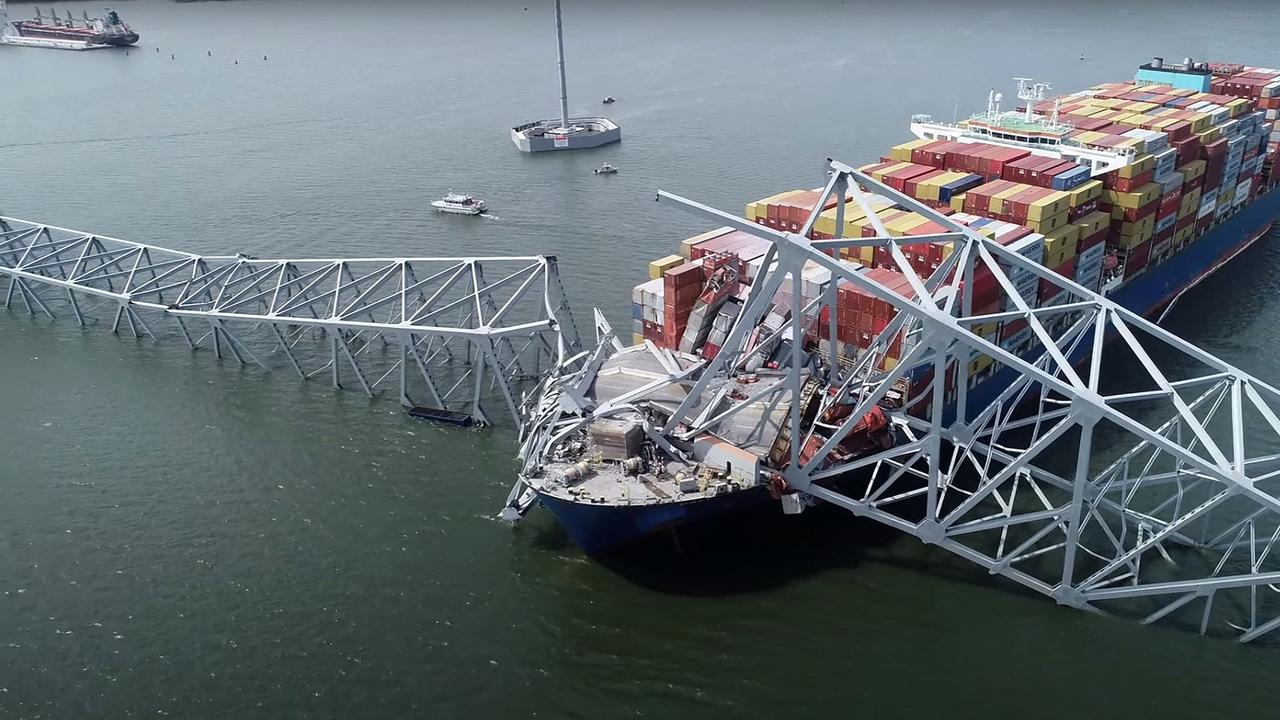
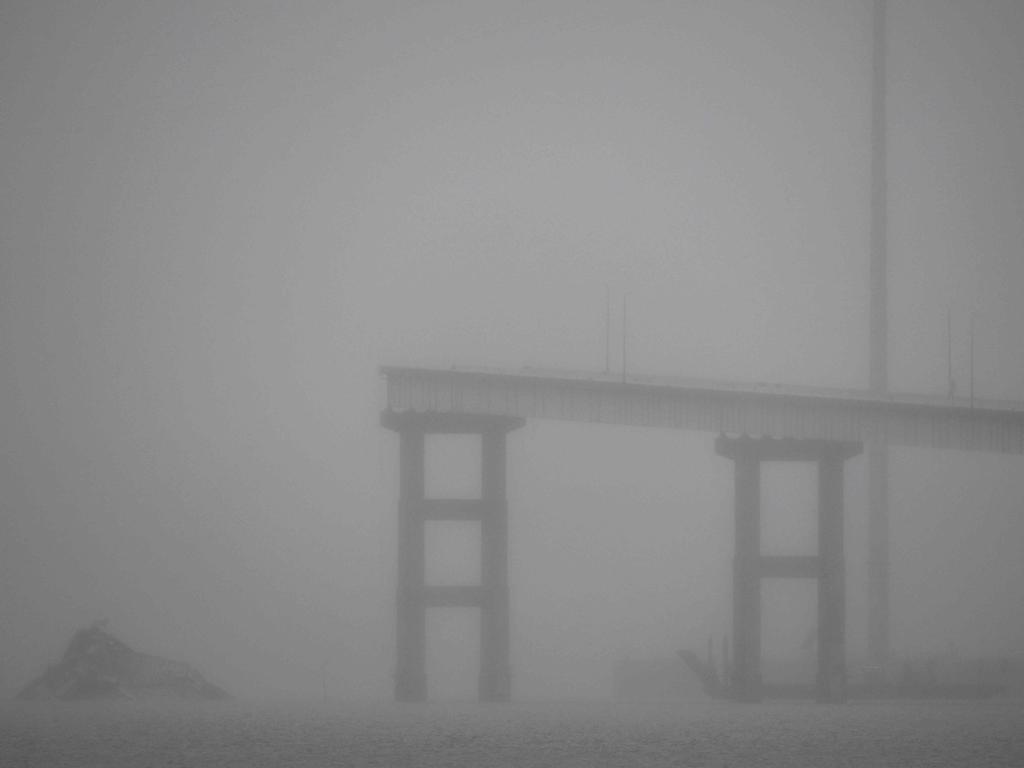
Investigations are now underway to determine what went wrong, with the disaster set to have major and long-term economic ramifications for the state of Maryland.
Colin Caprani, an associate professor in civil engineering at Monash University and an expert in bridge design, said a clue in video footage of the collapse indicates what went wrong.
“Video recordings show a cloud of dust appearing just before the bridge collapsed,” Dr Caprani said.
‘Last layer of protection’
Dr Caprani has considerable industry and academic experience and has worked a design structural engineer on a number of bridge projects.
His general research areas involve the probabilistic safety assessment of structures, specialising in highway bridge loading for short- and long-span bridges and human-induced vibration of structures.
He said the tragedy was “shocking” for engineers around the world, given the constant focus on ensuring the safety of bridges means the likelihood of a collapse is lower than that of being struck by lightning.
“However, the images from Baltimore are a reminder that safety can’t be taken for granted,” Dr Caprani said.

The Francis Scott Key Bridge opened in 1977 and was what’s known as a “continuous truss bridge” in three sections, or spans, and featured a main structure over the navigation channel.
“The bridge rests on four supports, two of which sit each side of the navigable waterway,” Dr Caprani explained in analysis for The Conversation. “It is these two piers that are critical to protect against ship impacts.”
The bridge was designed with two layers of protection against serious impact – a structure called a ‘dolphin’ and a kind of shield called a ‘fender’.
“The dolphins … made from concrete … are in the water about 100m upstream and downstream of the piers,” he explained. “They are intended to be sacrificed in the event of a wayward ship, absorbing its energy and being deformed in the process but keeping the ship from hitting the bridge itself.”
The bridge’s fenders are made of timber and reinforced concrete, placed around the main piers, and are the “last layer of protection”.
“Again, it is intended to absorb the energy of any impact,” he explained.
Why the bridge was doomed
Fenders like those on the Francis Scott Key Bridge weren’t intended to protect against collisions from very large vessels, Dr Caprani said.
“And so, when the MV Dali, weighing more than 100,000 tonnes, made it past the protective dolphins, it was simply far too massive for the fender to withstand.”
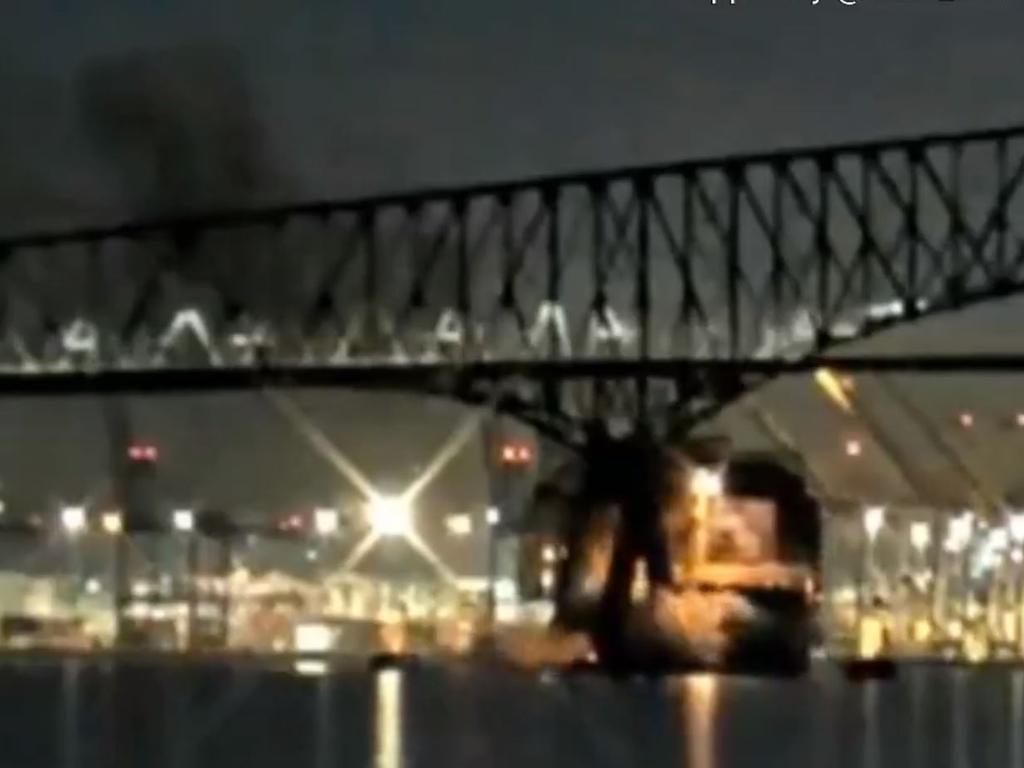
Footage of the ship smashing into the bridge show “a cloud of dust” just moments before the collapse, Dr Caprani said.
That likely shows the moment the fender “disintegrated” as it was crushed.
“Once the massive ship had made it past both the dolphin and the fender, the pier – one of the bridge’s four main supports – was simply incapable of resisting the impact.
“Given the size of the vessel and its likely speed of around 8 knots [15 kilometres per hour], the impact force would have been around 20,000 tonnes.”
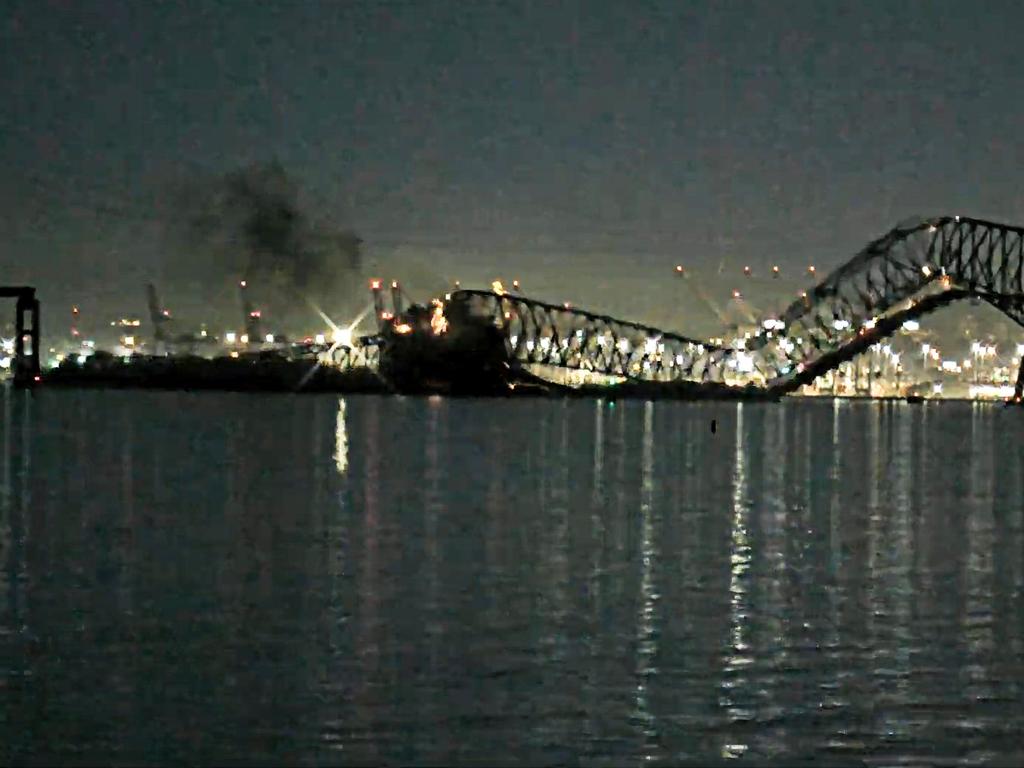
Dr Caprani concluded that “it’s clear the protection measures in place for this bridge were not enough to handle this ship impact”.
Today’s cargo ships are much bigger than those of the 1970s, when the Francis Scott Key Bridge was built.
As such, “it was not designed with a collision like this in mind”.
‘Dirty fuel’ theory
Experts in the US have also speculated that the emergence of plumes of thick black smoke coming from the ship minutes before the impact offer another chilling theory.
At 1.25am local time, CCTV footage shows lights on board the ship going out, before flickering back on about a minute later.
It’s at this point that thick black smoke can be seen coming from its funnel.
The lights go out again a minute later before the Dali appears to slow and drift, prompting the crew to send a mayday call.
Moments later, the ship strikes one of the supports, sparking a collapse.
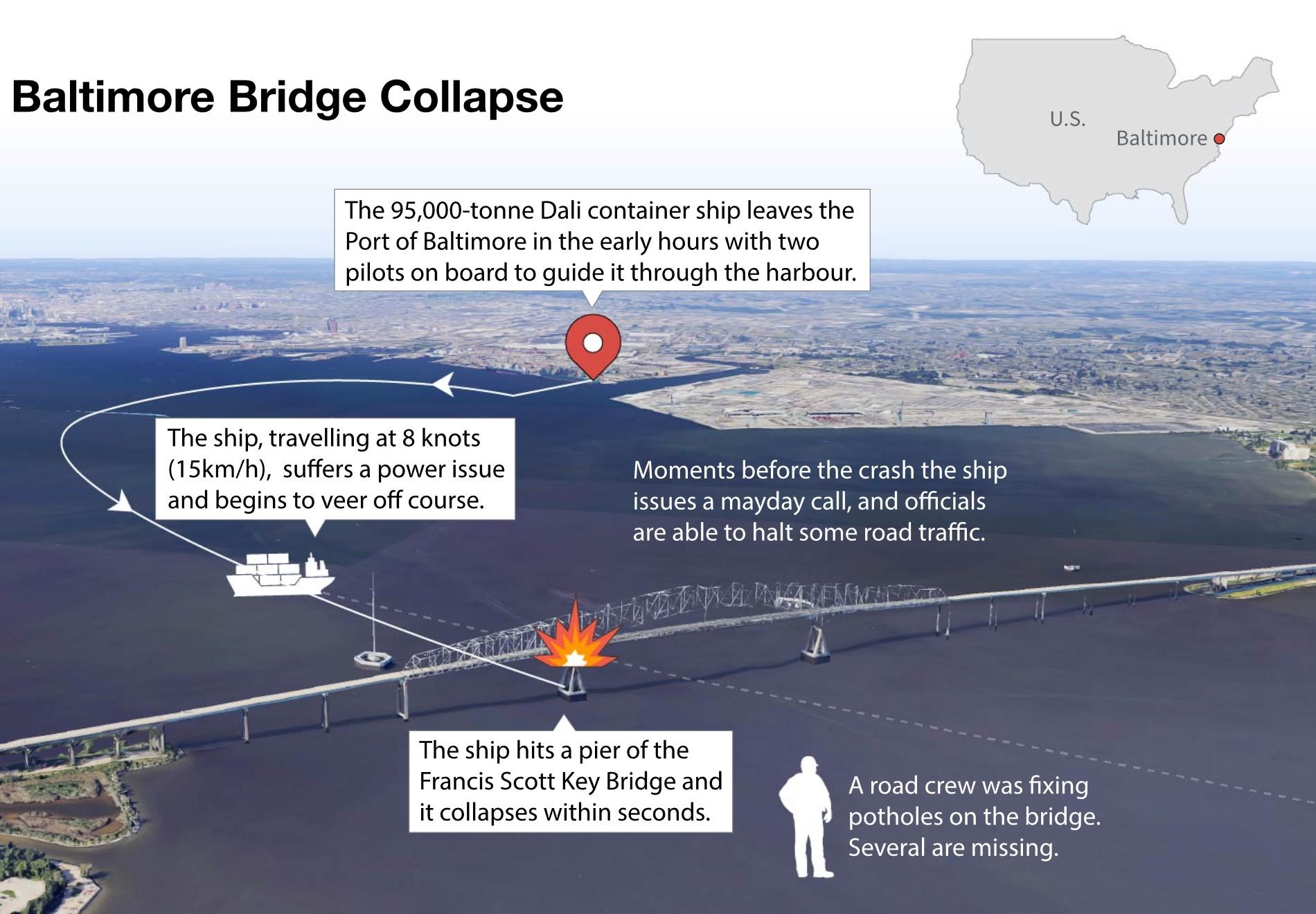
Today, newspaper The Wall Street Journal reports part of the investigation will probe whether contaminated or “dirty” fuel was a factor in the accident, citing a Coast Guard document.
“The vessel went dead, no steering power and no electronics,” an officer on board was quoted as saying in the document.
“One of the engines coughed and then stopped. The smell of burned fuel was everywhere in the engine room and it was pitch black.”
The smell and black smoke could indicate “sullied” fuel, the document reveals.
Not the first accident
Tuesday night’s crash wasn’t the first time a ship has hit the Francis Scott Key Bridge, with a collision in 1980 damaging a fender and requiring its replacement.
This week’s deadly collapse is one of 35 recorded across the globe between 1960 and 2015, according to a report from the World Association for Waterborne Transport Infrastructure.
“Collisions between ships and bridges in the 1970s and early 1980s led to a significant improvement in the design rules for protecting bridges from impact,” Dr Caprani said.
“Further impacts in the 1970s and early 1980s instigated significant improvements in the design rules for impact.”
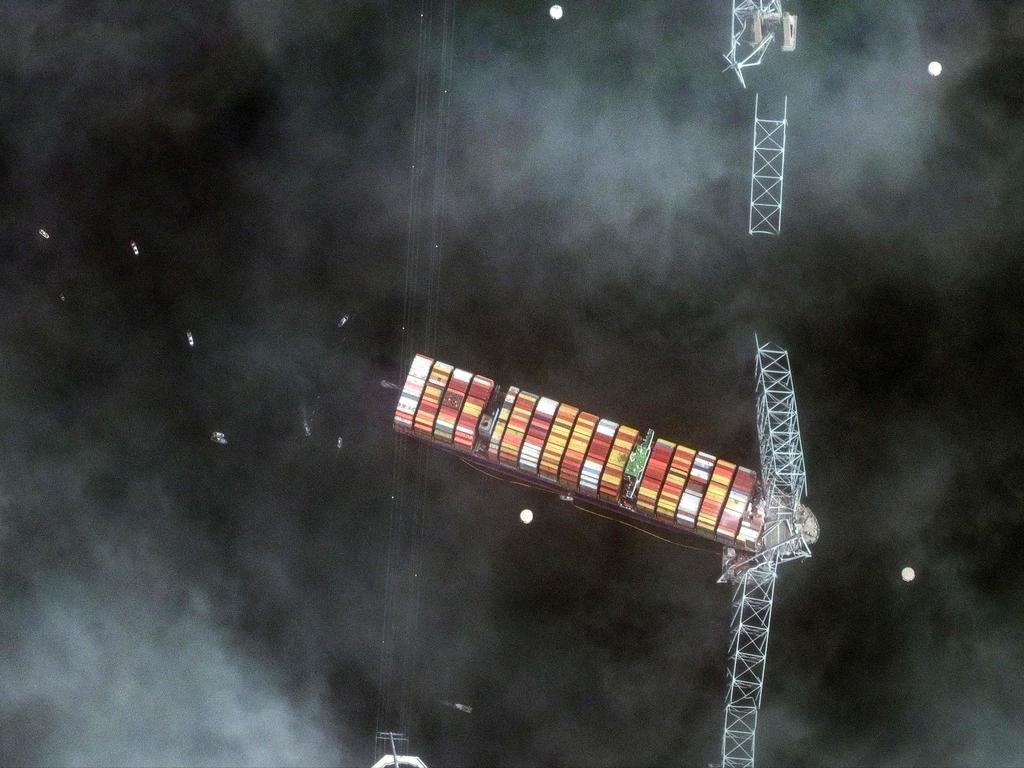
Stricter design regulations introduced in the early 1990s fundamentally changed how bridges were designed, he said.
They required engineers to think long-term about the types of future vessels that could pass near structures.
For example, in Australia, design standards require engineers to consider the biggest possible ship “likely to come along in the next 100 years and what would happen if it were heading for any bridge pier at full speed”.
“Designers need to consider the result of both head-on collisions and side-on, glancing blows. As a result, many newer bridges protect their piers with entire human-made islands.”
But those improvements in standards came too late for the Francis Scott Key Bridge, he said.
In essence, Dr Caprani said this week’s tragedy was a case of “a 20th Century bridge meets a 21st Century ship”.
Important lesson to be gleaned
The catastrophe should serve as a wake-up call for authorities around the world.
“One lesson is that we need to consider how the vessels near our bridges are changing,” Dr Caprani said.
“This means we cannot just accept the structure as it was built but ensure the protection measures around our bridges are evolving alongside the ships around them.”
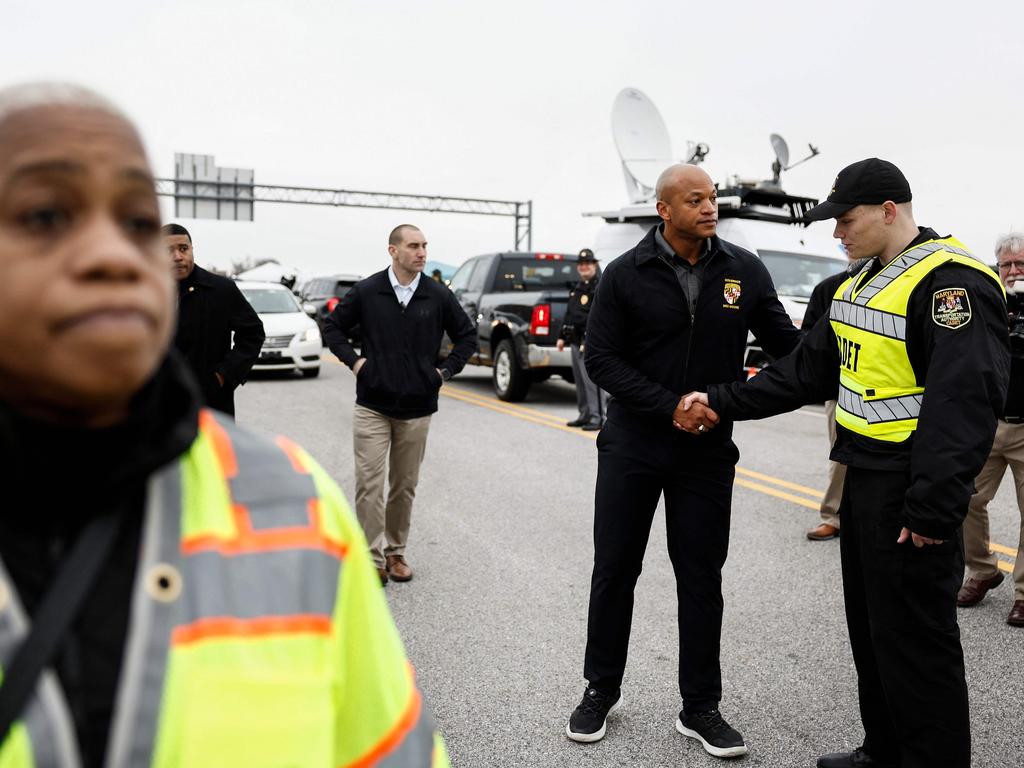
More Coverage
Authorities responsible for ageing infrastructure need to spend more time and money on maintenance and safety of older structures.
“We must remain vigilant in managing our bridges,” he said.
“This is the only way to ensure it remains safe and functional for the demands we put on it today.”






